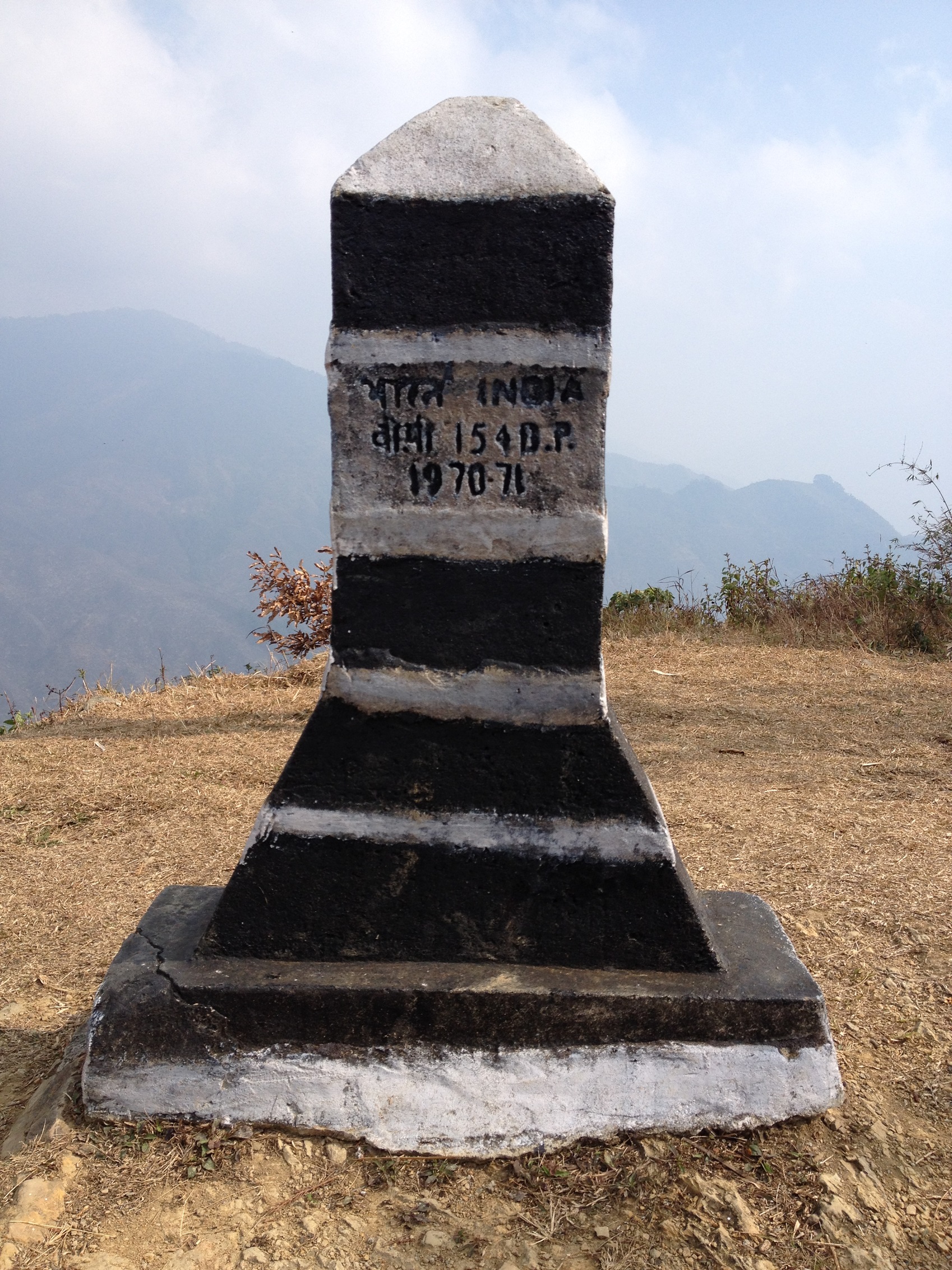Broken boundaries: 19th century power struggles in India’s frontiers
- 27 January 2021
- 5 minutes
Borders appear at face value to be clear lines of separation, but Caius Research Fellow Thomas Simpson’s academic study of colonial India delves deep into the uncomfortable complexity of frontier lands.
Dr Simpson’s first book, ‘The Frontier in British India: Space, Science, and Power in the Nineteenth Century’, published this month, resonates with contemporary times, with its discussion of demarcation lines and colonialism.
Dr Simpson’s focus is South Asia’s border regions, where environmental factors – deserts and high-mountain ranges – and established customs and structures – such as nomadism, long-running trade links, and pilgrimage routes – challenged the imposition of a fixed border.
“The frontier was this amorphous, ever shifting area. Over the period I look at (1820s to 1910s), it becomes more fixed, delineated by boundaries of various kinds,” says Dr Simpson, reflecting on his documentary research, which involved trawling colonial archives in London, Oxford, New Delhi, and border regions in Punjab and Assam.
“Border crossings for the local communities might be about everyday lived experience. But colonial personnel broke boundaries too, often with the aim of imposing personal power, acting as semi-sovereign individuals in these regions. They would insist on the importance of borders, but they would also violate the borders they’ve put in place.
“A lack of fixity served certain purposes for some colonial personnel. They embraced and worked with, and actively fostered in lots of cases, indeterminacy. They saw there was some advantage, particularly for their own roles, in perpetuating a lack of fixity.
“These were small acts of asserting more individual forms of power, and these marked out frontier administration.”

A boundary pillar on the India-Burma border (credit: Dr Thomas Simpson)
Dr Simpson found that colonial officials in border regions, away from the established centres of imperial administration, empowered locals, but only if it contributed to a growth in their own power.
He adds: “Local communities were often tribal, and tended to have a relatively flat social structure, not hierarchical.
“Colonial officials repeatedly attempted to encourage the concentration of power within those communities, to work with particular individuals or groups of individuals to support their own power.”
The brutal reality of colonial borders is discussed in detail, with violence the subject of one of Dr Simpson’s five chapters in a book which is the culmination of research which started with a PhD which began at Caius in 2011.
Colonial interventions tended to be violent, and I discuss how violence was rationalised, justified, and deployed by the colonial state
Dr Thomas Simpson
“Colonial interventions tended to be violent, and I discuss how violence was rationalised, justified, and deployed by the colonial state,” Dr Simpson says.
“There was a lasting impact. These communities didn’t just have a difficult relationship with the colonial state, but the post-colonial states too, after the British left the sub-continent. States see many of these communities, in north-east India and north-west Pakistan, as separatists.”
That is something which continues to this day, especially with fractious relations between India and Pakistan, including in mountainous regions where a physically demarcated border is not always possible.
“I hope the book can serve as a pre-history of some of the border conflicts in South Asia,” Dr Simpson adds.
“The India-Pakistan border is more firmly embedded further south, then as you get further north, to Kashmir, and further north in the north-west Himalayas, it gives way to an ungovernable, unpoliceable border; it runs through regions where long-term human habitation just isn’t viable.
“My work gives a sense of the pre-history of this, showing there are longer term resonances and continuities. Likewise, with the India-China border. Very recently there have been skirmishes, there was a major war in the 1960s.
“It’s something that is rooted in colonial attempts to impose international borders, and the profound limitations of those exercises. The colonial-era India-China border was never realised in any substantive way; it existed on a few maps, but didn’t necessarily go much further than that.
“I hope the book is of relevance to contemporary south and central Asia, even if what I’m looking at is a much earlier story, and there are points of difference.”
The cover of 'The Frontier in British India', by Dr Thomas Simpson
Dr Simpson acknowledges the imbalance in sources in his work, which largely leant on colonial documents. He also recognises colonialism remains relevant today, with all of the complexities and nuances of empire.
He adds: “What I’m looking at in frontier India is a very different set of colonial power structures from what colleagues of mine – including colleagues at Caius – are looking at in terms of trans-Atlantic slavery, for example.
“What it shares is a common rooting in colonial violence and in very troubling colonial notions of race, but how it plays out is thoroughly different in those two different arenas.
“One thing is simple: running throughout the whole period that I look at, across different border regions and so on, is a basic sense of what we’d absolutely understand today as racism. There is a basic belief on the part of British colonial administrators that they represent something superior, and that the people they’re seeking to govern, to interact with, and in some cases to enact violence towards, are inferior.
“That is something that is persistently troubling, and day-in, day-out working with colonial archives you have to reckon with. It never stopped being troubling, and I don’t think you should be inured to that.
“We should be troubled by that in empire, and it can inform us more broadly in society, forming the basis upon which we might have more productive conversations and take productive actions in the present.
“What I’d hope for, and what I’d hope academic historians can provide into public discourse, is a sense of two things. First, that empire still matters and we can’t just wish it away, and nor should we. And second, that it was and is complicated. Its legacies are complicated and contested, its practises at the time were complicated and contested.”



